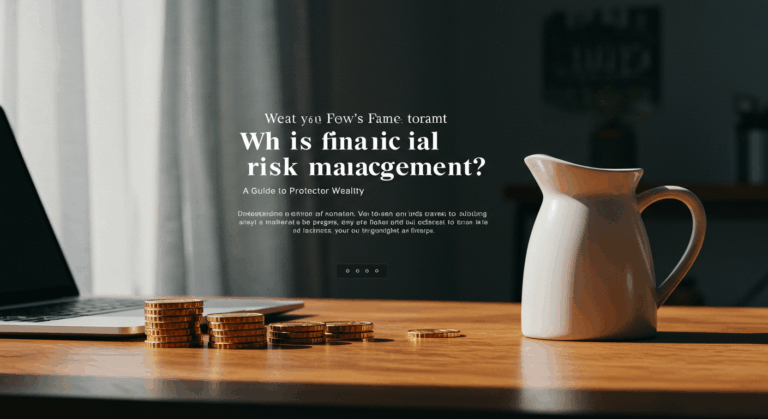The Black Swan Theory: How Unpredictable Events Govern the World
Have you ever looked at a major market crash or a groundbreaking technological innovation and wondered, How did nobody see that coming? The Black Swan Theory offers a powerful explanation for why our world, and especially our financial markets, are so profoundly shaped by events that are not only unpredictable but were considered impossible right up until they happened. This theory is not just an academic concept; it is a critical framework for understanding risk, opportunity, and the very nature of our modern economy. This article will deconstruct the Black Swan Theory, explore its impact on your finances, and provide actionable strategies to build a more resilient financial future in a world defined by uncertainty.
What Exactly Is a Black Swan Event?
Coined by author and former options trader Nassim Nicholas Taleb, a Black Swan is not just any unexpected event. It is a specific type of occurrence that meets three distinct criteria:
- It is an outlier: The event lies outside the realm of regular expectations. Nothing in the past can convincingly point to its possibility.
- It carries an extreme impact: When it does occur, it has catastrophic or, in some cases, astoundingly positive consequences.
- It has retrospective predictability: After the event, human nature compels us to create explanations that make it seem as if it were, in fact, predictable. We connect the dots in hindsight, creating an illusion of understanding that prevents us from learning from the event’s true randomness.
For centuries, it was an undeniable fact in the Old World that all swans were white. Every observation confirmed this belief. The discovery of a black swan in Australia shattered this long-held truth instantly. The term thus became a metaphor for an event that invalidates all previous experience. Historical examples of Black Swan events include the start of World War I, the advent of the personal computer, the September 11th attacks, and the 2008 global financial crisis. Each one was largely unforeseen, had a massive impact, and was explained away as predictable after the fact.
The Psychology Behind Our Blindness to Black Swans
Our inability to anticipate these events is not a simple failure of analysis; it is deeply rooted in human psychology and cognitive biases. We are wired to see patterns and create narratives, even where none exist. This narrative fallacy leads us to oversimplify complex realities, making us feel like we understand the world better than we actually do. We prefer a simple, compelling story over a complex, uncertain reality.
Furthermore, standard risk models in finance often rely on the ‘bell curve’ or normal distribution, which accurately describes common occurrences but drastically underestimates the probability and impact of rare, extreme events. These models effectively assume that Black Swans do not exist, leaving portfolios and entire economies dangerously exposed. You might see this in action when financial experts use past performance to predict future results, a practice that implicitly ignores the potential for a paradigm-shifting event that renders historical data irrelevant.

The Impact on Your Investments and Personal Finances
The consequences of a Black Swan event on your financial well-being can be swift and severe. A single negative event can erase years of accumulated wealth, as millions of investors discovered during the 2008 crisis. Portfolios that were thought to be diversified suddenly moved in lockstep, revealing hidden correlations and fragilities. The ripple effects extend beyond the stock market, influencing employment, real estate values, and the overall economy for years to come.
However, it is crucial to remember that Black Swans can also be positive. Think of the sudden emergence of a technology that creates an entirely new industry, generating immense wealth for early investors. The discovery of penicillin or the rapid growth of the internet are examples of positive Black Swans. The challenge lies in the fact that both positive and negative events are fundamentally unpredictable. Therefore, your financial strategy should not be about predicting the next Black Swan, but about building a structure that can withstand the negative ones and potentially benefit from the positive ones.
Strategies to Build a Resilient Financial Life
Accepting the reality of Black Swans does not mean succumbing to financial paralysis. Instead, it should empower you to adopt a more robust and intelligent approach to managing your money. Here are some strategies to help you prepare for the unpredictable.
- Embrace Radical Diversification: Go beyond a simple mix of stocks and bonds. Diversify your investment portfolio across different asset classes, geographic regions, and industries. The goal is to own assets that will react differently to the same major event, cushioning the blow to your overall net worth.
- Build Anti-fragility: This is a concept, also from Taleb, that goes beyond mere resilience. While a resilient system withstands shocks, an anti-fragile system actually benefits from them. In practical terms, this could mean holding a significant cash reserve. A market crash is devastating if you are fully invested, but it is a massive opportunity if you have cash on hand to buy quality assets at a deep discount.
- Stress Test Your Finances: Regularly ask yourself difficult ‘what if’ questions. What if your income dropped by 50% tomorrow? What if your largest investment lost most of its value? Running these thought experiments can help you identify weaknesses in your financial plan before a crisis forces you to.
- Prioritize a Robust Emergency Fund: This is your primary defense against personal financial shocks. Having three to six months’ worth of essential living expenses in a liquid savings account provides a crucial buffer, giving you time to make rational decisions rather than being forced to sell investments at the worst possible time.
Conclusion
The Black Swan Theory teaches us a humbling but vital lesson: the world is far more random and unpredictable than our models and minds want us to believe. The most significant events in history and finance are often the ones no one saw coming. While you cannot predict the next Black Swan, you can prepare for its arrival. By building a financial plan founded on principles of diversification, anti-fragility, and a healthy respect for the unknown, you can protect yourself from the downside of negative events and position yourself to capitalize on the opportunities that unforeseen positive events may bring. The goal is not to avoid uncertainty but to learn how to thrive within it.
Frequently Asked Questions (FAQ)
Is every stock market crash a Black Swan event?
Not necessarily. A market correction or a bear market that occurs as part of a predictable economic cycle would not be considered a Black Swan. A crash is a Black Swan only when its trigger is a truly unforeseen and unprecedented event with an extreme impact, such as a global pandemic or a sudden geopolitical crisis that no one was preparing for.
How can I make my investment portfolio ‘anti-fragile’?
One popular strategy is the ‘barbell’ approach. This involves concentrating the vast majority (perhaps 80-90%) of your portfolio in extremely safe assets like cash and short-term government bonds. The remaining small portion (10-20%) is then invested in highly speculative, high-risk, high-reward ventures. This structure severely limits your potential losses while giving you exposure to the massive upside of a positive Black Swan. Avoiding excessive debt (leverage) is another key component of an anti-fragile financial life.
Does the Black Swan Theory mean that all financial forecasting is useless?
It suggests that we should be extremely skeptical of precise, long-term forecasts. The theory highlights the inherent limitations of predicting the future based on the past. Instead of relying on a single forecast, a better approach is to use financial analysis to understand a range of potential outcomes and to build a plan that is robust across multiple scenarios, rather than optimized for one predicted future.





